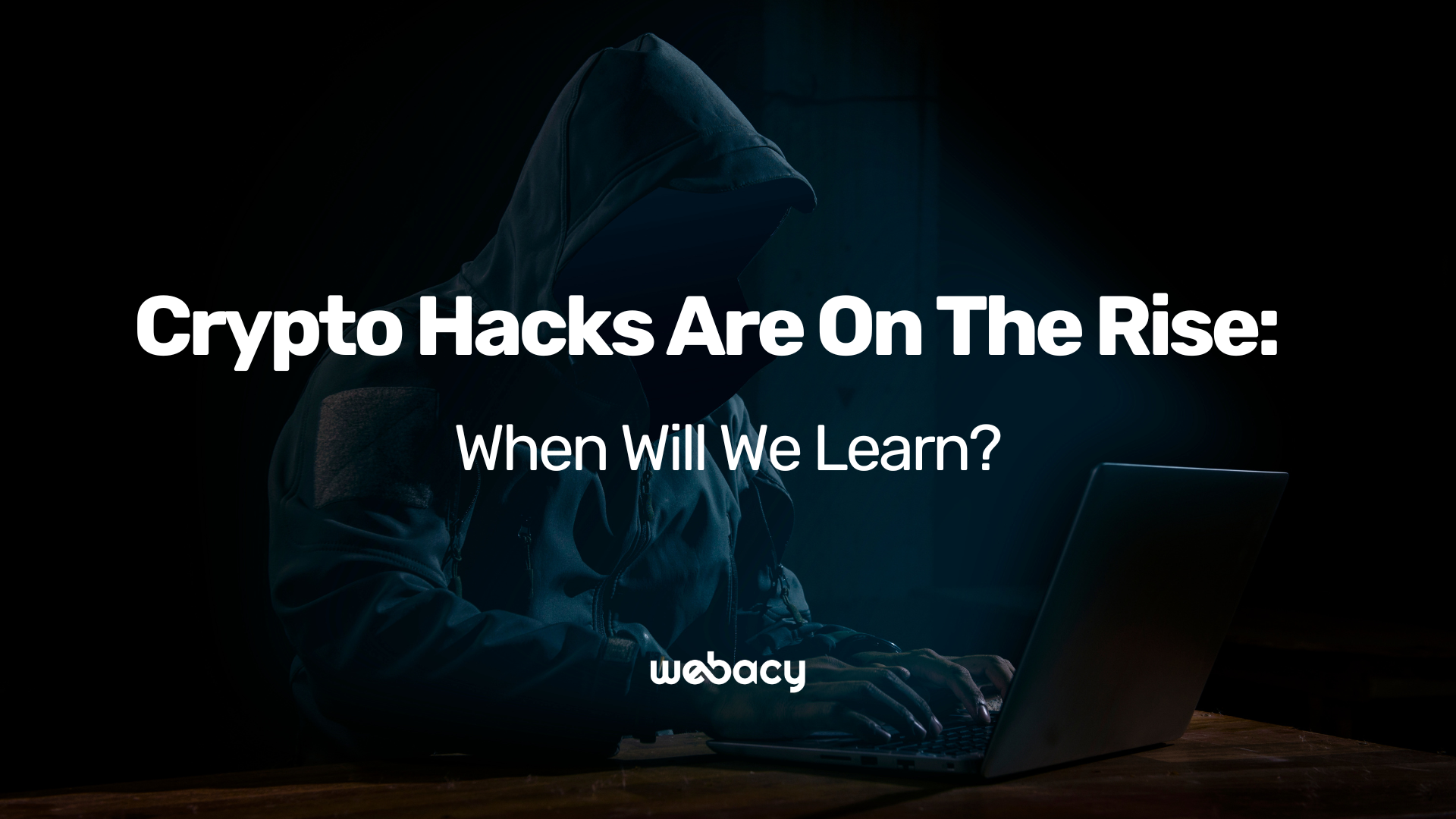Crypto Hacks Are on The Rise: When Will We Learn?

The recent surge in cryptocurrency trading has brought excitement and potential gains, but with it comes the increased risk of hacking and phishing. As the industry continues to evolve, so too do the methods employed by those seeking to exploit security loopholes.
Our recent survey paints a clear picture of the escalating threat landscape, as it revealed that 3 of 4 users have been victims of a hack. The statistics show that even in 2024, the challenge of securing digital assets like cryptocurrencies remains a pressing issue.

Amidst the ongoing battle against web3 cyber attacks and threats, our CEO, Maika Isogawa, shared a guest post on Bankless recently on how to stay safe in web3. Let’s explore some vital safety measures that she recommends for everyone involved in crypto.
Prioritizing Wallet Hygiene
Maintaining separate wallets for different purposes is essential for your digital safety. High-value assets like NFTs or large token holdings need secure wallets, separate from those you might use for day-trading.
Occasionally, you might be tempted to use a single wallet for everything due to convenience, especially when verifying ownership or for specific airdrop payouts. Platforms like Delegate can help you manage your wallets more safely by delegating permissions without risking your main assets. You should also regularly review and clean up your wallets to protect your assets. Alternatively, it may be appropriate to set up a Panic Button on Webacy. With Panic Button, your most valuable assets are set up to be moved to an alternative wallet at the click of a button in case you are in a compromised position.
Monitoring Your Assets
It’s crucial to keep tabs on what’s happening in your wallets. You might notice regular transactions you've made, but sometimes, there may be changes you didn’t authorize or recognize. Webacy makes it easy to monitor your wallets by sending real-time alerts via SMS or email whenever there's activity in and around your wallets, helping you stay on top of all of your wallets’ activity, and additionally, one step ahead of potential threats.
Pre-Transaction Research
Before you jump on the bandwagon of a hot new token, pause. Rapid decision-making can lead to mistakes, so it’s responsible to assess the safety of a transaction before signing anything. In the guest post, our CEO recommends using browser extensions and tools like Pocket Universe and Fire to help evaluate transactions before they occur.
Reviewing Approvals
When you engage in transactions, you often grant permission to use your tokens or NFTs. Regularly reviewing these permissions, or “Approvals,” is essential, as it helps you understand which ones are risky.
While you can use tools such as Revoke.Cash and Etherscan’s token approval services, they have a drawback in that they don’t show which approvals are overreaching or malicious. Webacy’s Revoke functionality addresses this gap by allowing you to manage approvals and assess their safety.
Embracing Traditional Web Security
Traditional online security practices are still foundational to protecting your crypto assets. Avoid common pitfalls, such as using SMS for two-factor authentication due to risks like SIM swapping. Instead, use more secure 2FA methods like a code-generating application.
Update your passwords regularly and consider using password managers to avoid repeated or compromised credentials. Simple steps like bookmarking frequently visited sites can also prevent you from falling for phishing scams.
Choosing Secure Projects
Opt for projects and companies that prioritize user security. With advancements like Embedded Security APIs by Webacy, projects can now integrate comprehensive security measures directly into their platforms that are powered by trustworthy third-parties. Companies like Mintify are leading by example by combining advanced security measures directly into their services to protect users proactively – for instance, you’re able to see the safety levels of new mints appearing on their “mint now” module, as well as your own wallet that you’re connecting into the platform.
A Call for Distributed Safety
Decentralization demands distributed security measures. The shift towards user and network-controlled systems requires a collective effort to mitigate risks and enhance security across the board. By working together, the crypto community can establish a safer ecosystem for all participants if we are able to pool together data on malicious actors and activity. Chainabuse has started one flavor of this movement and we hope to help continue to augment as this space grows.
Would you like to delve deeper into how to ensure the safety of your digital assets? Check out the full article for insights and detailed strategies.